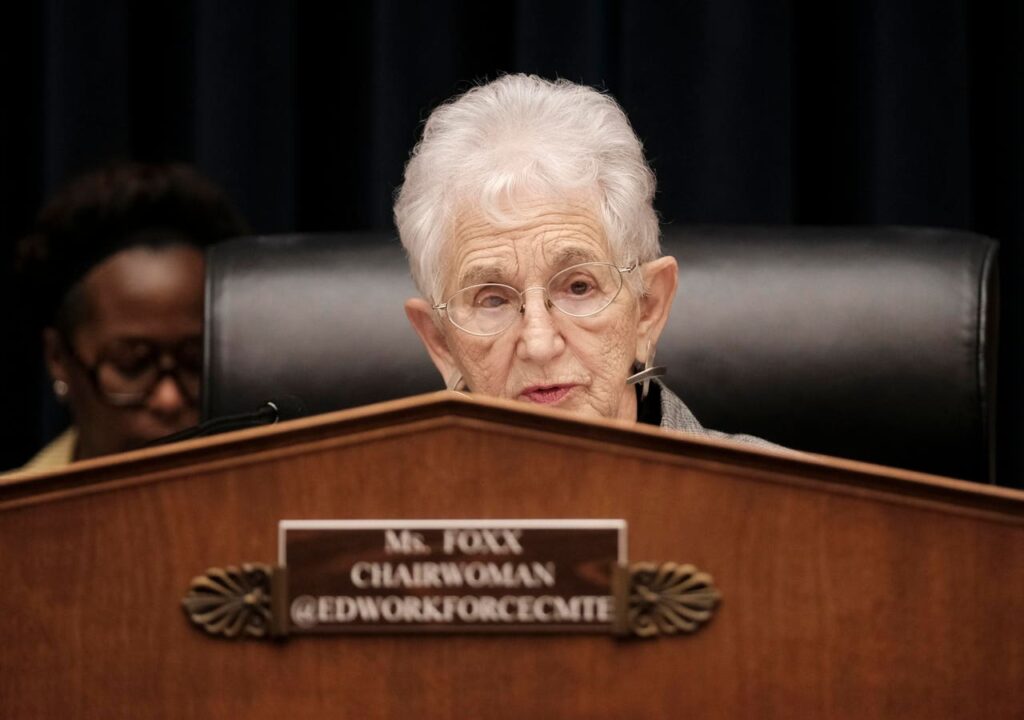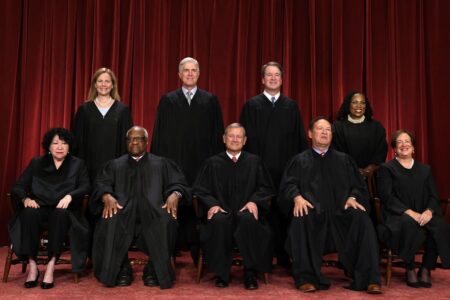House Republicans are floating a proposal to limit eligibility for a key federal student loan forgiveness program intended to benefit public service borrowers.
Public Service Loan Forgiveness, or PSLF, is a popular program created by bipartisan legislation in 2007 and signed by President George W. Bush. The program offers complete student loan forgiveness for Direct federal student loans after a borrower completes 10 years of employment with a qualifying nonprofit or government employer, while meeting other program criteria (such as repaying their loans under an income-driven repayment plan).
PSLF was plagued by loan servicing and oversight problems for years, resulting in low approval rates. But under the Biden administration, the Education Department enacted a number of regulatory actions and temporary waivers designed to rectify these historic issues. As a result, more than a million borrowers ultimately received student loan forgiveness through PSLF by the beginning of this year.
But as student loan forgiveness has become a more polarized issue, the once-bipartisan program is now facing more opposition from many Republican lawmakers. And some party leaders are calling for limits to PSLF, or even a full repeal. Here’s what borrowers should know.
GOP Calls For Changing Student Loan Forgiveness Eligibility Under PSLF, But With No Specifics
According to a policy memo leaked to Politico last week, House Budget Committee members are considering a number of reforms to federal student loan forgiveness and repayment programs as part of a massive budget reconciliation bill primarily intended to extend expiring tax cuts. The budget reconciliation process would allow Republicans, who narrowly control both the House and the Senate, to bypass the senate filibuster and pass legislation on a party-line, majority vote.
The committee called out PSLF in the memo, although no specifics were provided on potential changes to the program.
“Reform Public Service Loan Forgiveness (PSLF),” reads a line-item on the memo. “This option would allow the Committee on Education and the Workforce to make much-needed reforms to the PSLF, including limiting eligibility for the program.” But the memo does not explain how student loan forgiveness eligibility might be limited, nor does it offer specifics on who would be impacted. The projected budgetary savings over a 10-year period is left as “TBD.”
How Student Loan Forgiveness Eligibility Under PSLF Could Be Limited
The memo is a proposal at this juncture, not draft legislation, so nothing has been finalized yet. In addition, while detailed elements of the College Cost Reduction Act, sponsored by Rep. Virginia Foxx (R-NC), are included in the policy memo (including a repeal of other federal student loan forgiveness programs), PSLF reforms are not part of that draft legislation. So it is unclear what Republican lawmakers may be looking at in terms of limiting PSLF eligibility.
However, there is precedent for PSLF reform proposals. The Obama administration had proposed capping student loan forgiveness under PSLF at $57,000 for the fiscal year budget covering 2015 to 2017. The first Trump administration proposed a full repeal of PSLF in 2018. And several Republican lawmakers in Congress also proposed repealing PSLF legislatively at that time. None of these proposals wound up passing, and current borrowers may have been grandfathered into PSLF had they been enacted.
Memo Also Calls For Repealing Other Student Loan Forgiveness Programs
The House Budget Committee’s memo calls for significant changes to other federal student loan forgiveness programs, including a repeal of Biden-era regulatory changes to the Closed School Discharge and Borrower Defense to Repayment programs, which made it easier for borrowers to qualify for relief. The memo also suggests limiting the Education Department’s ability to draft new regulations that provide for significant amounts of student loan forgiveness outside of existing programs.
The memo also suggests making changes to other federal student loan programs, such as eliminating the Graduate PLUS and Parent PLUS programs. Under the proposal, these loan options would be gradually eliminated for new borrowers beginning on July 1, 2025, with full repeal altogether by 2028. Advocates have been critical of these proposals, saying it may force families to rely more on private student loans, which tend to have less flexibility and fewer repayment options than federal student loans.
The memo calls for eliminating interest subsidies, as well, for borrowers currently enrolled in school. That would mean that borrowers would wind up owing more than what they originally borrowed by the time that they graduate and enter repayment. “Currently, the government pays the interest that accrues on a student loan while the borrower is still enrolled in school full-time, essentially meaning the student does not have to pay interest on their loan while actively studying,” says the memo. “This policy option would eliminate this arrangement.”
Perhaps most significantly, the memo suggests a full repeal of all income-driven repayment plans including the SAVE plan (which is currently bogged down in litigation) as well as the ICR, IBR and PAYE plans, along with student loan forgiveness after 20 or 25 years in repayment. These plans would be replaced with a new income-driven repayment option that uses a similar formula as these plans, but only allows for loan forgiveness after a borrower has repaid a set total amount tied to the 10-year Standard plan. This could effectively keep borrowers in debt for much longer than the 25-year maximum term envisioned under current IDR options. The changes would apply to “loans originated after June 30, 2024,” according to the memo.
Regulatory Changes To PSLF Could Also Impact Student Loan Forgiveness
Even if PSLF reforms do not make it into the upcoming reconciliation bill, the Trump administration could take unilateral steps through the regulatory process to make changes to PSLF eligibility. For example, the Education Department could rewrite or repeal new rules that went into effect under the Biden administration in July 2023. These regulations expanded the definition of full-time, qualifying public service employment; allowed additional deferment and forbearance periods (primarily associated with national and military service) to count toward PSLF; and established a safe harbor provision (now commonly known as PSLF Buyback) to give borrowers a mechanism to get certain non-qualifying periods counted.
To change regulations that would reform student loan forgiveness under PSLF, the department would have to go through a formal legal process under the Administrative Procedures Act. The is a lengthy process that often can take a year or two. And changes that go too far could potentially lead to legal challenges.
Read the full article here











